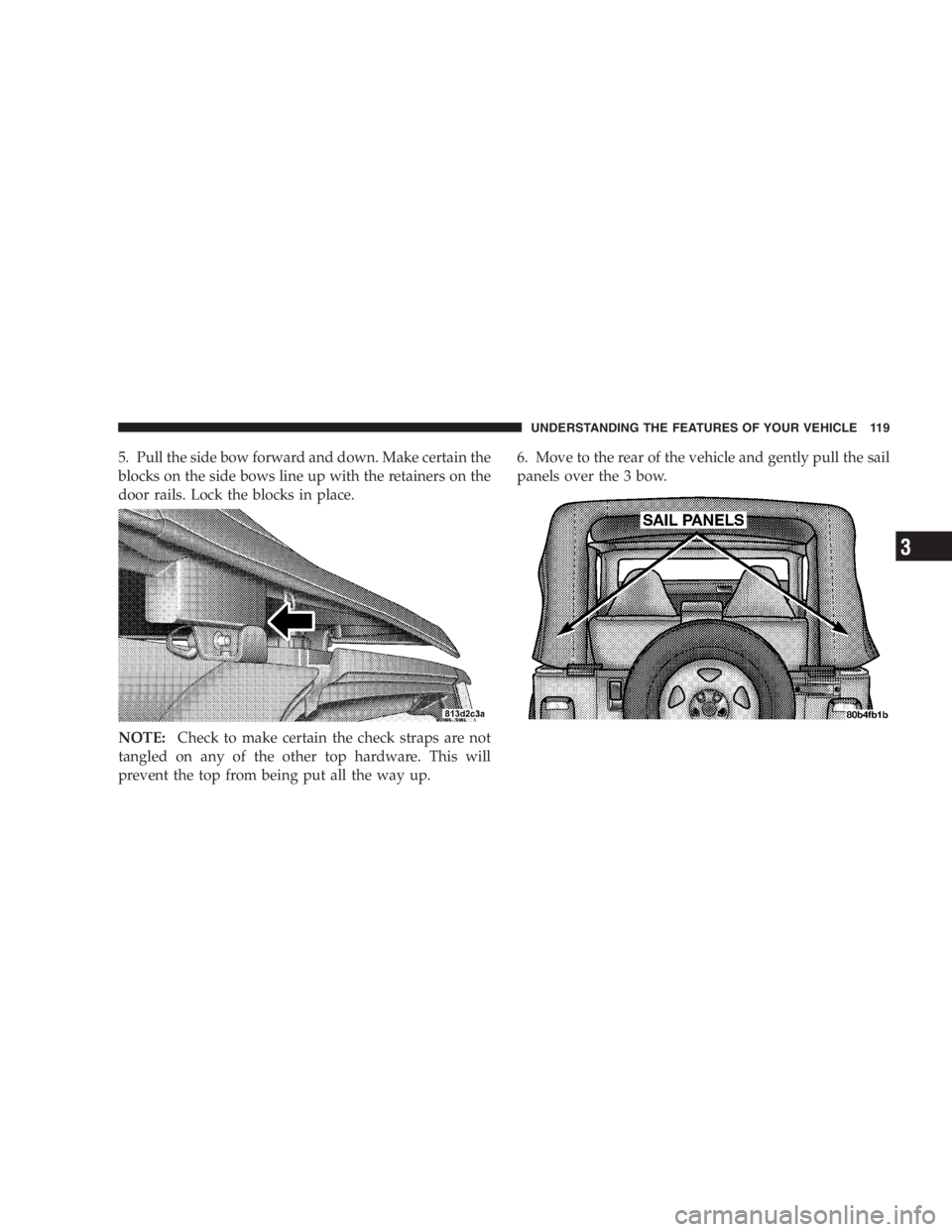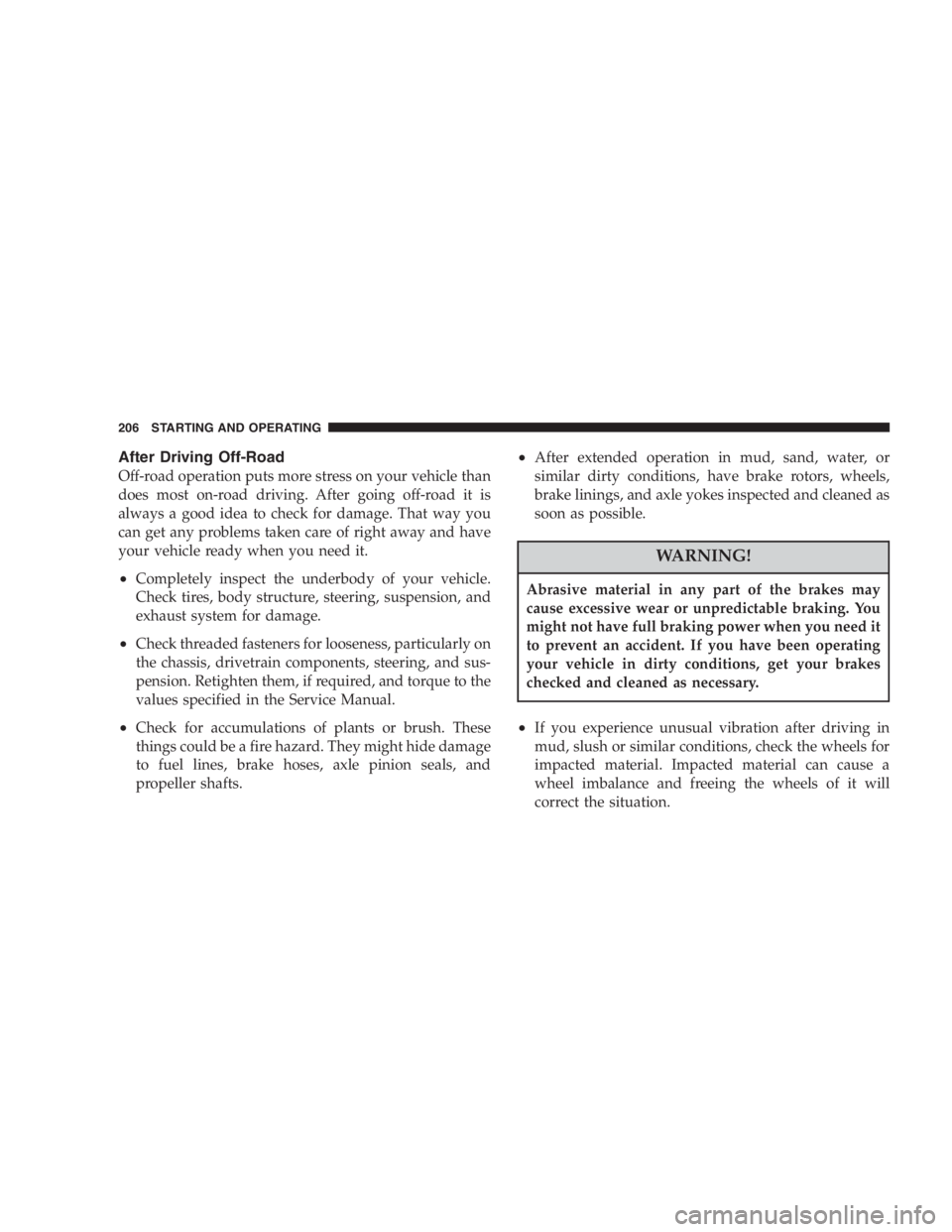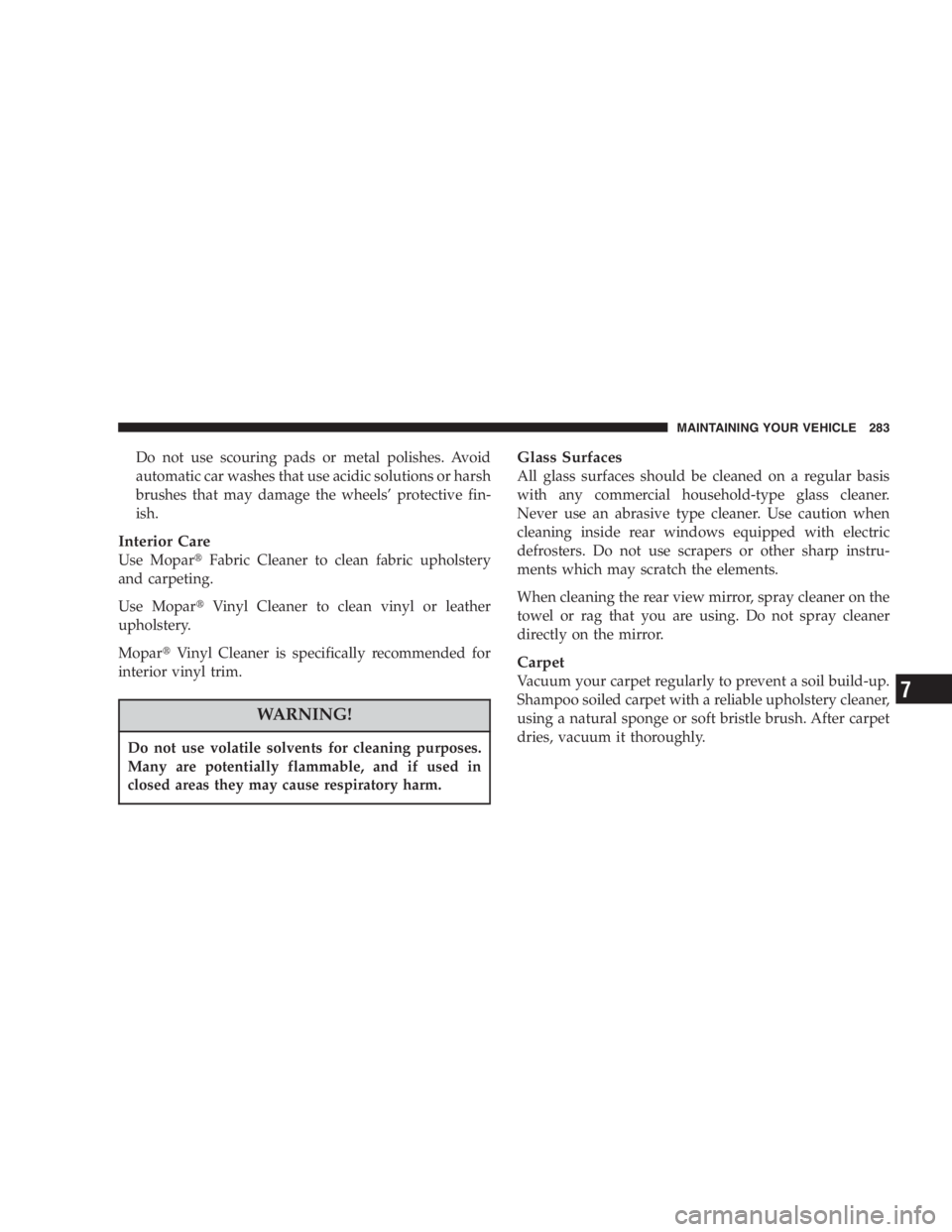lock JEEP WRANGLER 2003 User Guide
[x] Cancel search | Manufacturer: JEEP, Model Year: 2003, Model line: WRANGLER, Model: JEEP WRANGLER 2003Pages: 1056, PDF Size: 12.55 MB
Page 119 of 1056

The Anti-Lock Brake System is subject to possible
detrimental effects of electronic interference caused
by improperly installed aftermarket radios or tele-
phones.
NOTE:During severe braking conditions, a pulsing
sensation may occur and a clicking noise will be heard.
This is normal, indicating that the Anti-Lock Brake
System is functioning.
ON-ROAD DRIVING TIPS
Utility vehicles have higher ground clearance and a
narrower track to make them capable of performing in a
wide variety of off-road applications. Specific design
characteristics give them a higher center of gravity than
ordinary cars.An advantage of the higher ground clearance is a better
view of the road, allowing you to anticipate problems.
They are not designed for cornering at the same speeds as
conventional 2-wheel drive vehicles any more than low-
slung sports cars are designed to perform satisfactorily in
off-road conditions. If at all possible, avoid sharp turns or
abrupt maneuvers. As with other vehicles of this type,
failure to operate this vehicle correctly may result in loss
of control or vehicle rollover.
OFF-ROAD DRIVING TIPS
When To Use 4L (Low) Range
When off-road driving, shift to 4L (Low) for additional
traction and control on slippery or difficult terrain,
ascending or descending steep hills, and to increase low
speed pulling power. This range should be limited to
extreme situations such as deep snow, mud, or sand
202 STARTING AND OPERATING
Page 206 of 1056

Cavity Fuse/Color Description
29 Relay ASD
30 Relay A/C Clutch
31 Relay Transmission
32 Relay Starter
33 Relay ABS
34 Open
35 Relay Fog Lamp
36 Relay Horn
37 Relay Fuel Pump
38 Relay HBL (Rear Window De-
froster)
39 Relay Front Differential Locker
(Rubicon) or High Speed
Fan (2.4L Engines)
40 Relay Rear Differential Locker
(Rubicon) or Low Speed
Fan (2.4L Engines)
MAINTAINING YOUR VEHICLE 289
Page 283 of 1056

Here are some tips on getting the most out of your child
restraint:
•Before buying any restraint system, make sure that it
has a label certifying that it meets all applicable Safety
Standards. The manufacturer also recommends that
you make sure that you can install the child restraint in
the vehicle where you will use it before you buy it.
•The restraint must be appropriate for your child’s
weight and height. Check the label on the restraint for
weight and height limits.
•Carefully follow the instructions that come with the
restraint. If you install the restraint improperly, it may
not work when you need it.
•The passenger seat belts are equipped with cinching
latch plates designed to keep the lap portion or lap belt
tight around the child restraint so that it is not
necessary to use a locking clip. Pull up on the shoulder
36 THINGS TO KNOW BEFORE STARTING YOUR VEHICLE
Page 438 of 1056

Always remove the key from the ignition, and lock
all doors when leaving the vehicle unattended.
Page 460 of 1056

Here are some tips on getting the most out of your child
restraint:
•Before buying any restraint system, make sure that it
has a label certifying that it meets all applicable Safety
Standards. The manufacturer also recommends that
you make sure that you can install the child restraint in
the vehicle where you will use it before you buy it.
•The restraint must be appropriate for your child’s
weight and height. Check the label on the restraint for
weight and height limits.
•Carefully follow the instructions that come with the
restraint. If you install the restraint improperly, it may
not work when you need it.
•The passenger seat belts are equipped with cinching
latch plates designed to keep the lap portion or lap belt
tight around the child restraint so that it is not
necessary to use a locking clip. Pull up on the shoulder
36 THINGS TO KNOW BEFORE STARTING YOUR VEHICLE
Page 485 of 1056

If the hood is not fully latched, it could fly up when
the vehicle is moving and block your forward vision.
Be sure all hood latches are latched fully before
driving.
Page 490 of 1056

Tilting the steering column while the vehicle is
moving is dangerous. Without a stable steering col-
umn, you could lose control of the vehicle and have
an accident. Adjust the column only while the ve-
hicle is stopped. Be sure it is locked before driving.
Page 607 of 1056

Manual Transmission Shift Speeds in MPH (KM/H)
EngineSpeeds 1 to 2 2 to 3 3 to 4 4 to 5 5 to 6
2.4L Accel. 14
(23)24
(39)34
(55)46
(74)57
(92)
Cruise 11
(18)19
(31)27
(43)38
(61)45
(72)
4.0L Accel. 15
(24)24
(39)34
(55)47
(76)56
(90)
Cruise 10
(16)19
(31)27
(43)37
(60)41
(66)
Clutch Interlocking Ignition System
Manual transmission vehicles are equipped with a clutch
interlock safety feature. With this feature engaged, you
must depress the clutch pedal to allow cranking of the
engine. To temporarily bypass this safety feature while
STARTING AND OPERATING 183
Page 609 of 1056

It is dangerous to shift the selector lever out of “P” or
“N” if the engine speed is higher than idle speed. If
your foot is not firmly on the brake pedal, the
vehicle could accelerate quickly forward or in re-
verse. You could lose control of the vehicle and hit
someone or something. Only shift into gear when
the engine is idling normally and when your right
foot is firmly on the brake pedal.
Brake Transmission Shift Interlock System
This vehicle is equipped with a brake transmission shift
interlock system (BTSI) that holds the gearshift lever in
the P (Park) position when the ignition switch is in the
OFF position. To move the gear selector lever out of the
P (Park) position, the ignition switch must be turned to
the ON position, the brake pedal and the button on the
front of the shifter handle must be depressed.
Gear Ranges
P (Park)
Supplements the parking brake by locking the transmis-
sion. The engine can be started in this range. Never use P
(Park) while the vehicle is in motion. Apply the parking
brake when leaving the vehicle in this range. Always
apply the parking brake first, and then place the selector
in P (Park) position.
STARTING AND OPERATING 185
Page 610 of 1056

Unintended movement of a vehicle could injure
those in and near the vehicle. As with all vehicles,
you should never exit a vehicle while the engine is
running. Before exiting a vehicle, you should always
shift the vehicle into P (Park), remove the key from
the ignition, and apply the parking brake. Once the
key is removed from the ignition, the transmission
shift lever is locked in the P (Park) position, securing
the vehicle against unwanted movement. Further-
more, you should never leave children unattended
inside a vehicle.